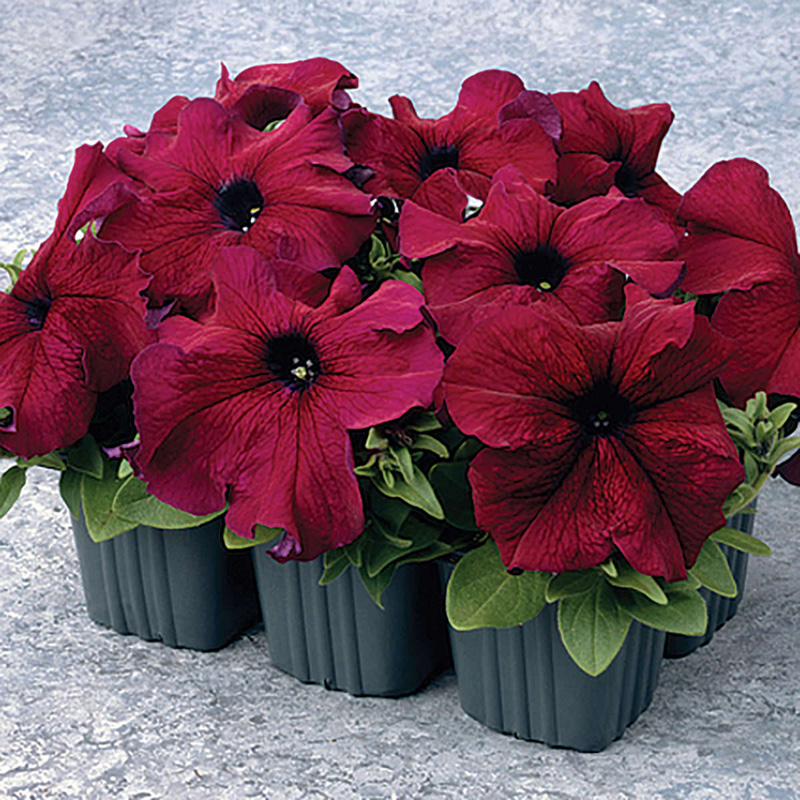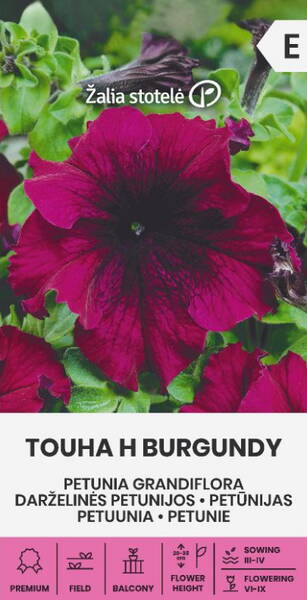Amazing flowers of the new petunia variety open one after another without interruption from July to October, and their radiant color attracts attention from afar. Compact bushes 20-35 cm high with cascades of inflorescences 9-10 cm in diameter are ideal for flower arrangements in hanging baskets, as well as for mixed plantings in balcony boxes. No other plant is suitable for decorating comfortable and romantic relaxation corners to such an extent as petunia.
SOWING: pelleted seeds! To facilitate the sowing and growing of small-seeded crops, a system has been developed to coat each seed with a special composition. When moisture hits the pellet, the shell crumbles. Sowing February-April for seedlings. Granules are placed on the surface of slightly compacted and moistened soil without covering them, moistened from a spray bottle, covered with glass, and kept at a temperature of +20+24°C, preventing the pellet shell and compost from drying out until the seedlings germinate and periodically removing condensation drops from the glass surface. Shoots appear only in the light (excluding direct sunlight) on days 10-15. After the appearance of the first true leaf, the crops are ventilated. And later, the glass is removed, gradually lowering the temperature to +14+16°C. Seedlings do not tolerate high temperatures and waterlogging well. Hardened seedlings are planted in the ground after spring frosts have ended at a distance of 15-20 cm.
CARE: grows better in well-lit places with light, fertile soil. Responds gratefully to watering and regular feeding.
FLOWERING: from July until frost.

* Despite its popularity (especially in city flower beds), petunia has recently appeared quite rarely in our flower gardens. Many consider it too banal, while others simply do not want to mess with seedlings every year. However, you are unlikely to find another flower that not only has so many different shades and shapes but also blooms all summer until the frost, requiring almost no attention. In addition, petunia looks great in balcony boxes, hanging baskets, and planters.
Recently, various forms of hybrid petunia are mainly used (these can be both compact bushes 20-45 cm high and ampelous varieties with stems up to 75 cm long).
Petunias are divided into two large classes: Multiflora (flower diameter about 6 cm) and Grandiflora (diameter up to 12 cm). The former are more unpretentious and need only a sunny location. Grandifloras are more thermophilic and demanding of growing conditions; their flowers suffer more from prolonged rains.
Petunia is quite drought-resistant but blooms better with regular watering. With an excess of fertilizer, you will get a lot of greenery and few flowers. Seeds are sown at home in late March, not covering them with earth, but only pressing them into the soil. At a temperature of about twenty degrees, shoots appear in 7-14 days. Seedlings need to be kept at a temperature not lower than eighteen degrees, otherwise, the plants will bush poorly. At the end of May, seedlings must be hardened off by putting them outside during the day.
Petunia should be planted in place only after the last frost. It blooms 60-80 days after germination. For flowering to continue all summer, the ovaries formed must be removed immediately, preventing the formation of seeds.
If in August the petunias have stretched out strongly, and the buds remain only at the tops of the shoots, cut the plants almost at the base. After that, water and fertilize them well - in a few weeks new side shoots will form and the petunia will bloom again. Especially successful specimens can be transplanted into pots in the fall and put on the window to continue flowering. In February, cuttings can be cut from them, rooted, and planted in a flower bed in the spring.












